Step into the world of Japanese herbs and spices, where ancient flavors mix with modern culinary magic. Let’s explore the rich history of shiso, myoga, and sansho, and unlock the secrets behind their mouthwatering tastes.
These unique ingredients aren’t just add-ons; they’re gateways to a flavorful journey and a deeper understanding of Japanese culture.
Imagine a time when samurais roamed the land, and shoguns ruled with an iron fist. In this era, shiso, myoga, and sansho were more than mere flavor enhancers – they were culinary treasures that shaped the very essence of Japanese cuisine.
Their vibrant aromas, subtle spices, and electrifying zing were woven into the fabric of every dish, creating a symphony of flavors that delighted the senses.
But what makes these herbs and spices so special? Why should you care about flavors from a bygone era? The answer lies in the transformative power they hold.
With shiso’s refreshing aroma, myoga’s subtle spice, and sansho’s electrifying zing, these ingredients have the ability to elevate any dish, taking it from ordinary to extraordinary.
Not only do these Japanese herbs and spices add depth and complexity to your meals, but they also offer a myriad of health benefits. Shiso, with its antioxidant properties, helps boost your immune system and promotes overall well-being.
Myoga, known for its anti-inflammatory properties, can soothe your digestive system and relieve muscle pain. And let’s not forget sansho, which not only adds a delightful kick to your dishes but also aids digestion and promotes blood circulation.
So, whether you’re a culinary enthusiast or simply someone with a curious palate, the world of shiso, myoga, and sansho awaits your exploration.
Join us as we delve into the historical significance and modern-day applications of these remarkable herbs and spices. Get ready to embark on a journey that will forever change the way you think about food and flavor.
Are you ready to uncover the hidden secrets of these captivating ingredients? Then let’s dive in and discover the wonders that await.
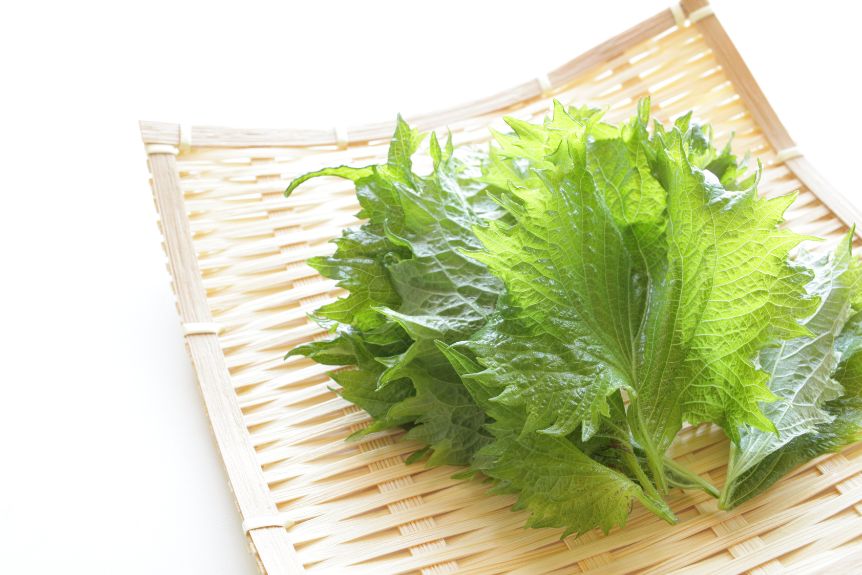

The Essence of Shiso
Shiso, a cornerstone of Japanese cuisine, offers a unique flavor that can transform any dish. You’ve likely encountered its vibrant presence in sushi rolls, salads, or as a garnish, but its potential extends far beyond these familiar uses.
To harness the full power of shiso, it’s essential you understand its versatility and learn how to incorporate it into your cooking repertoire skillfully.
First, recognize that shiso comes in two main varieties: green and purple. Each brings its own distinct flavor profile and aesthetic appeal to dishes. Green shiso, with its bright, slightly spicy taste, pairs wonderfully with seafood and rice dishes.
On the other hand, purple shiso adds a deeper, somewhat minty dimension that’s perfect for pickling and coloring foods naturally.
To truly control the essence of shiso in your kitchen, experiment with it in both fresh and dried forms. Fresh leaves can be chopped into salads, used as wraps, or infused into oils and vinegars.
Dried shiso, meanwhile, can be sprinkled onto soups, mixed into seasonings, or steeped into teas. By understanding and utilizing shiso’s multifaceted character, you’ll elevate your culinary creations, adding layers of flavor that intrigue and delight.
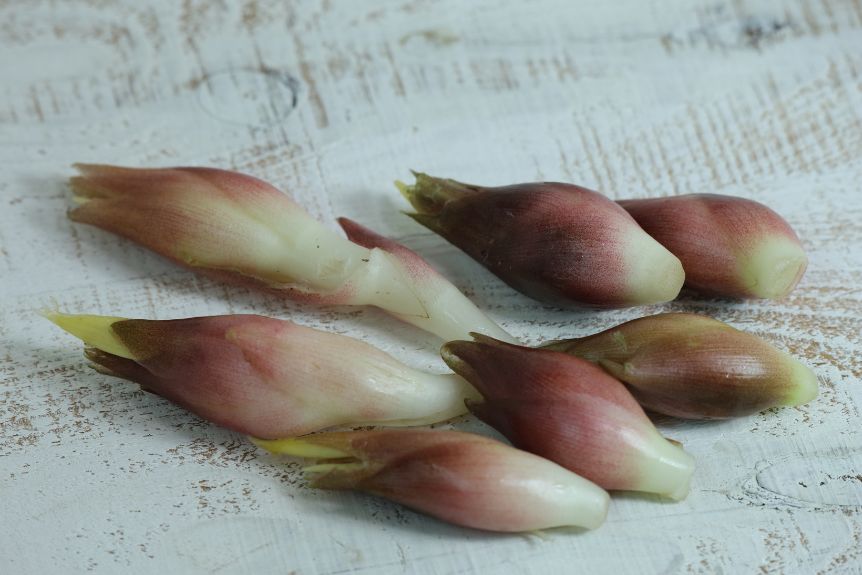

Discovering Myoga
Venturing further into the realm of Japanese herbs, let’s explore myoga, a lesser-known but equally fascinating ingredient. You’ve likely encountered its subtle yet distinctive flavor if you’re an aficionado of Japanese cuisine.
Myoga, or Japanese ginger, isn’t your typical spice. It doesn’t overpower; instead, it complements, adding a fresh, slightly sweet zest to dishes.
You’re in control when you incorporate myoga into your culinary creations. Its unique flavor profile can elevate simple dishes to something extraordinary.
Think of adding thinly sliced myoga to a salad for an unexpected twist or garnishing a bowl of miso soup to enhance its depth of flavor. It’s all about experimenting and discovering what works best for your palate.
Moreover, myoga isn’t just a flavor enhancer; it’s packed with health benefits. It’s believed to improve digestion and reduce inflammation, making it a wise choice for those mindful of their health.
In mastering the use of myoga, you’re not only expanding your culinary repertoire but also taking charge of your dining experience. So, don’t hesitate to experiment with this versatile ingredient and make your meals not just nourishing but truly unforgettable.
Unveiling Sansho
After exploring the unique flavors of myoga, let’s turn our attention to another intriguing Japanese spice, sansho, known for its distinctively sharp taste.
Sansho isn’t just any spice; it’s a powerhouse of flavor that can transform your culinary creations with just a pinch. You’re in control here, deciding precisely how much of its lemony, peppery zing to introduce into your dishes.
Sansho comes from the berries of the Japanese prickly ash. It’s not merely about adding heat; it imparts a complex flavor profile and a tingling sensation that can elevate a simple dish to something extraordinary.
You’ll find it indispensable in creating authentic Japanese dishes like unagi (eel) and yakitori.
But here’s where you truly take charge: sansho isn’t one-note. It can also be used in innovative ways in your kitchen. Imagine the zest it could add to your homemade salad dressings, marinades, or even cocktails.
Experimenting with sansho allows you to harness its unique qualities, making your culinary repertoire more diverse and vibrant.
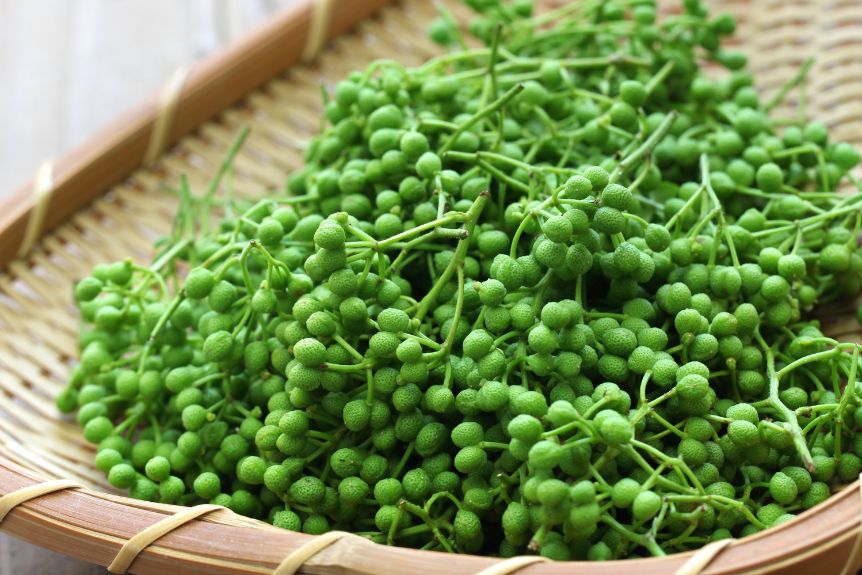

Culinary Applications of Japanese Herbs and Spices
Exploring the culinary applications of Japanese herbs and spices opens a world of flavor you can effortlessly incorporate into your meals.
Shiso, with its mint-like aroma, transforms simple dishes. Toss it into salads for a refreshing twist or use it as a wrap for sushi and sashimi, controlling the balance of earthy flavors in your Japanese cuisine.
Myoga, a type of ginger, offers a slightly sweet yet tangy profile. It’s your secret ingredient for elevating dressings and pickles, giving you the power to craft dishes with a unique zing that intrigues the palate.
Sansho, known for its citrusy pepperiness, is a game-changer. Sprinkle it over grilled meats or fish, and you’ll command a tingling sensation that’s both surprising and delightful. It’s especially effective in noodle dishes or broths, where you control the intensity of each bite with precision.
You’re in command, turning everyday meals into extraordinary experiences with these herbs and spices. Each offers a way to showcase your culinary skills, inviting you to experiment and tailor flavors that resonate with your taste.
Embrace the versatility and control the essence of your cooking with Shiso, Myoga, and Sansho.
Japanese Herbs and Spices Health Benefits
While enhancing your meals with Shiso, Myoga, and Sansho elevates their flavor, these Japanese herbs and spices also offer significant health benefits worth noting.
Shiso, for instance, isn’t just a pretty leaf to complement your dish; it’s packed with vitamins A, C, and calcium, supporting your immune system and bone health. It’s a powerhouse that you can easily incorporate into your diet for a healthier you.
Myoga, on the other hand, isn’t just about its unique zest. It’s known for its ability to improve digestive health. Including Myoga in your meals can help you maintain a balanced gut, which is crucial for overall well-being. It’s your secret weapon for keeping your digestive system running smoothly.
Lastly, don’t overlook Sansho. This spice doesn’t just add a tingling sensation to your palate; it’s also celebrated for its anti-inflammatory properties. Incorporating Sansho into your diet can help you manage pain and inflammation, giving you control over your body’s well-being.
Conclusion
Now you’ve explored the vibrant world of Japanese herbs and spices, diving into the essence of shiso, uncovering the uniqueness of myoga, and unveiling the piquant flavors of sansho.
These ingredients don’t just elevate your dishes; they also bring a plethora of health benefits to your table.
So, next time you’re in the kitchen, remember to incorporate these flavors into your culinary creations. They’re not just additions; they’re transformative elements that’ll take your meals to a whole new level.
However, we understand that taste preferences vary from person to person. Some may argue that the strong and distinct flavors of shiso, myoga, and sansho mightn’t be to everyone’s liking.
We’d love to hear your opinion on Japanese herbs and spices. Do you enjoy their unique flavors, or do you prefer more familiar options? Leave a comment below and let’s know your thoughts!


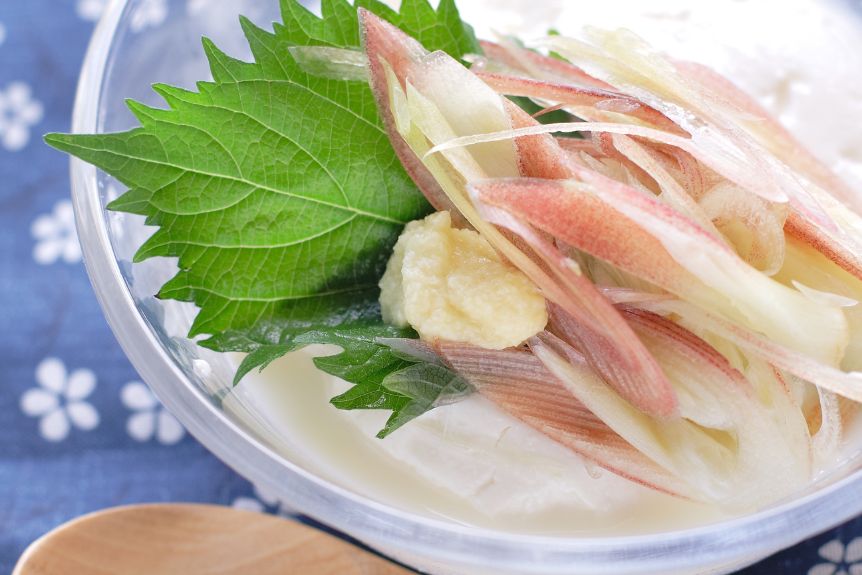

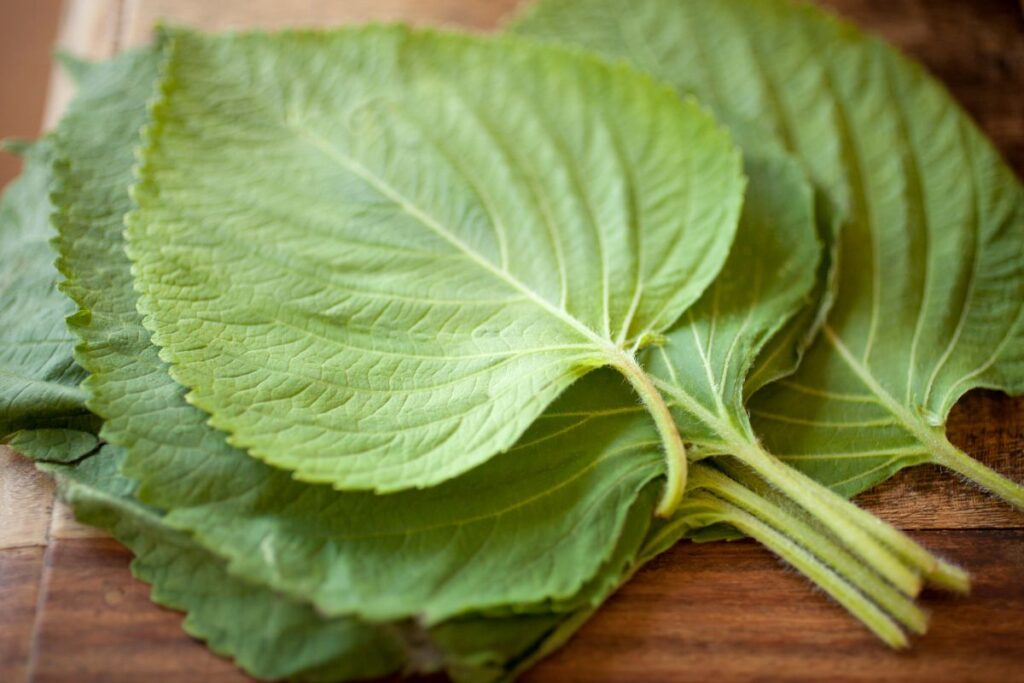
Konnichiwa! (Hello!) I'm Pat Tokuyama, a Japanese tofu cookbook author, who travels for music, food, and adventure. If you like Japanese tea, checkout some of the newestorganic japanese tea, matcha bowls and noren and more!
** Curious about the Plant Based Japanese Cooking Club? ** Learn more here!